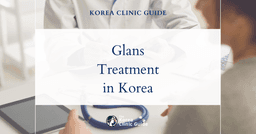Small Glans
Description
A "small glans"—sometimes referred to as a small penis head, undersized penile tip, or disproportionately small glans—describes a situation where the glans (head of the penis) appears noticeably smaller compared to the rest of the shaft. This concern is common among men seeking penis enlargement or male enhancement, as a small glans can impact confidence, body image, and sexual satisfaction. While the glans naturally varies in shape and size among individuals, some may feel self-conscious if it appears less prominent or "buried." Common terms searched for online include "small glans penis," "small penis head," "tiny glans," or "penis head too small." Solutions like glans enhancement procedures and glans augmentation are available in South Korea for men looking to improve proportions, appearance, and self-esteem. If you feel your glans size is holding you back, expert consultation and safe medical options can help restore confidence and enhance your well-being.
Procedures that treat this ailment: Glans Enlargement
Search
Categories
Related Posts




Top Small Glans Clinics
Blue Urology
Yeongdeungpo Station
Free consultation from the clinic
Blue Urology in Yeongdeungpo provides comprehensive, patient-centered care for urinary and men’s health concerns. General and Diagnostic Procedures Cystoscopy: A thin scope is inserted through the urethra to inspect the bladder and urethra. It helps diagnose causes of blood in urine, recurrent infections, pain, or urinary blockage. Uroflowmetry: A noninvasive test that measures how fast and how much you urinate. It helps evaluate urinary obstruction, weak bladder, or treatment results. Urodynamic testing: A set of tests that measure bladder pressure and function during filling and voiding. It guides treatment for incontinence, urgency, or difficult urination. Prostate ultrasound: An ultrasound probe images the prostate to assess size and structure. It evaluates nodules and helps guide targeted biopsies. Prostate biopsy: Small tissue samples are taken from the prostate using a needle under ultrasound guidance. Pathology checks for cancer to confirm diagnosis and plan care. Prostate and Bladder Care Transurethral Resection of the Prostate (TURP): A surgical scope removes excess prostate tissue through the urethra to relieve blockage from BPH. It improves urine flow and reduces frequency, urgency, and nighttime urination. Laser prostate surgery: A laser is used through a scope to remove or shrink obstructing prostate tissue. It aims for faster recovery and less bleeding than traditional surgery. Botox injection for overactive bladder: Botulinum toxin is injected into the bladder wall via cystoscopy to calm overactivity. It reduces urgency, frequency, and leakage when medications are not enough. Pelvic floor therapy and biofeedback: Guided exercises strengthen pelvic muscles to improve control. It helps stress incontinence and supports recovery after prostate treatments. Stone Management Extracorporeal Shock Wave Lithotripsy (ESWL): Focused sound waves break kidney or ureteral stones into small fragments. The pieces are then passed naturally with urine. Ureteroscopy (laser stone removal): A thin scope is passed into the ureter or kidney to see and fragment stones with a laser, then remove them. A temporary stent is sometimes placed to keep urine flowing and reduce swelling. Stone analysis and prevention plan: Passed or removed stones are analyzed for composition. Diet, hydration, and medications are tailored to reduce the chances of new stones. Men’s Health and Fertility Vasectomy: The vas deferens tubes are sealed through tiny skin openings for permanent contraception. It is an outpatient procedure with quick recovery and does not affect sexual function. Varicocele repair: Enlarged scrotal veins are tied off through a small incision to improve comfort and semen quality. Microscopic techniques reduce pain, recurrence, and complications. Erectile dysfunction evaluation and treatment: Testing and counseling identify causes and options such as medication, vacuum devices, or injections. Care is individualized to restore reliable erections and sexual confidence. Premature ejaculation treatment: Behavioral strategies, topical anesthetics, and medications are combined to improve control. Counseling addresses performance anxiety and relationship factors. Scrotal and Penile Surgery Circumcision: The foreskin is removed to treat recurrent infections, scarring, or personal preference. Modern techniques focus on precision, comfort, and cosmetic outcome. Hydrocele repair: A fluid-filled sac around the testicle is removed or repaired through a small scrotal incision. The goal is to relieve swelling, heaviness, and discomfort. Spermatocele removal: A benign cyst arising from the epididymis is excised while preserving nearby structures. Surgery relieves lump-related discomfort and cosmetic concerns. Penile curvature correction: Sutures are placed to straighten curvature that interferes with function. This improves sexual function and reduces pain from Peyronie’s disease.
learn more
TrueMan Medical Center - Myeongdong
Myeongdong Station
Free consultation from the clinic
Welcome to TrueMan Medical Center in Myeongdong, a leading clinic specializing in male health and wellness. Here, you can access a variety of advanced treatments in a private and professional environment. Premature Ejaculation Behavioral Therapy: Tailored exercises and counseling to help you gain better control during intercourse. This integrated approach aims to manage psychological elements affecting performance. Pharmacological Treatment: Customized medication plans to delay ejaculation and enhance satisfaction. These medications are prescribed based on individual evaluations. Penis Enlargement Dermal Fillers: Injections that add volume and enhance the appearance of the penis. This minimally invasive procedure provides quick results with minimal recovery time. Surgical Enlargement: Comprehensive surgical techniques to increase penis length and girth. These procedures are performed by expert surgeons with extensive experience. Erectile Dysfunction Medication Management: Use of FDA-approved drugs like Viagra and Cialis to improve erectile function. These medications are administered under medical supervision for maximum efficacy. Shockwave Therapy: Non-invasive treatment using low-intensity shockwaves to stimulate blood flow and improve erections. This therapy is suitable for men seeking a non-pharmaceutical option. Benign Prostatic Hyperplasia (BPH) Medication Therapy: Prescription drugs aimed at reducing prostate size and alleviating urinary symptoms. Medications are customized to individual needs and conditions. Minimally Invasive Surgery: Procedures like TURP (Transurethral Resection of the Prostate) to relieve severe BPH symptoms. These surgeries are performed using advanced equipment for optimal outcomes.
learn more


